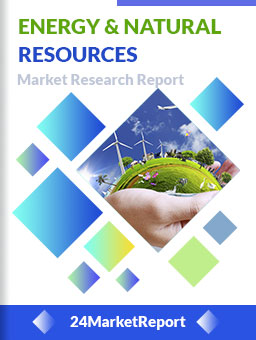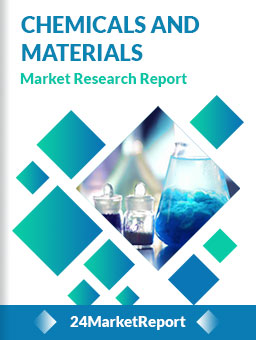
Download FREE Report Sample
Download Free sampleMARKET INSIGHTS
The global electric underfloor heating mats and cables market was valued at USD 1.4 billion in 2024. The market is projected to grow from USD 1.45 billion in 2025 to USD 1.74 billion by 2032, exhibiting a CAGR of 3.2% during the forecast period.
Electric underfloor heating systems provide radiant heat through specialized mats or cables installed beneath floor surfaces. Unlike traditional forced-air systems that circulate heated air, these solutions directly warm people and objects through thermal radiation - offering superior energy efficiency (up to 30% savings versus conventional systems) and eliminating airborne allergen circulation. The technology comes in two primary forms: pre-configured heating mats with embedded cables, and flexible heating cables that can be custom-laid for complex floor plans.
Market growth is being driven by rising demand for energy-efficient heating solutions in both residential and commercial construction, particularly in cold climate regions. While Europe and North America currently dominate with 90% market share, Asia-Pacific is emerging as the fastest-growing region due to rapid urbanization. Recent product innovations include ultra-thin heating mats (as slim as 1.8mm) and smart thermostats with AI learning capabilities, with companies like Warmup and nVent Electric leading these technological advancements.
Growing Demand for Energy-Efficient Heating Solutions Accelerates Market Expansion
The global push toward energy efficiency continues to drive adoption of electric underfloor heating systems, with radiant heating proving 15-20% more efficient than forced-air systems in residential applications. Unlike traditional HVAC systems that lose heat through ductwork, underfloor heating mats and cables provide direct radiant warmth while operating at lower temperatures (typically 29°C vs. 49-66°C for radiators). This thermal efficiency translates to tangible cost savings, with building owners reporting 10-30% reductions in energy consumption when switching from conventional systems. Recent advancements in self-regulating cable technology further enhance efficiency by automatically adjusting heat output based on floor temperature.
Rising Renovation Activities and Smart Home Integration Fuel Market Growth
To know more about market statistics, Download a FREE Sample copy
The residential renovation market, valued at over $400 billion globally, presents significant growth opportunities as homeowners increasingly retrofit properties with modern heating solutions. Underfloor systems are particularly popular in bathroom and kitchen renovations, accounting for 42% of residential installations. The integration with smart home ecosystems represents another key driver - Wi-Fi enabled thermostats now allow zone control with 0.5°C precision, while AI-powered systems can learn usage patterns to optimize energy use. Major manufacturers are launching IoT-compatible products, with the smart thermostat market projected to grow at 20% CAGR through 2030, creating natural synergies with underfloor heating solutions.
➤ The commercial sector shows particular promise, with healthcare facilities and hotels adopting underfloor heating to meet stringent air quality standards while reducing operational costs by up to 25% compared to conventional systems.
Furthermore, government incentives for energy-efficient building upgrades across Europe and North America are accelerating market penetration. The EU's Renewable Energy Directive targets 32% energy efficiency improvements by 2030, with several member states offering VAT reductions and grants for underfloor heating installations.
High Installation Costs and Retrofitting Challenges Limit Market Penetration
While operational savings are significant, the upfront installation costs remain a barrier for many potential adopters. Electric underfloor heating systems typically cost 20-40% more to install than conventional heating systems in new constructions, with retrofits in existing buildings often requiring expensive floor modifications. The need to raise floor levels by 8-15mm to accommodate heating elements can create compatibility issues with doors and fixed fittings, adding to renovation costs. In price-sensitive markets, these financial considerations continue to steer consumers toward cheaper alternatives despite the long-term benefits of radiant heating.
Technical Constraints in Certain Applications
Not all flooring materials perform equally with underfloor heating, with certain wood types (particularly thicker than 18mm) and moisture-sensitive materials requiring specialized installation techniques. Tile and stone remain the preferred surface materials, accounting for 68% of installed systems, while engineered wood has gained traction with 22% market share. The heating output limitations in poorly insulated buildings and the longer warm-up times compared to forced-air systems (typically 30-90 minutes) also present functional constraints in some usage scenarios.
Market Fragmentation and Quality Concerns
The presence of over 50 global brands and numerous regional manufacturers has led to significant price and quality variations in the market. While premium systems from European manufacturers typically offer 15-25 year warranties, some budget alternatives have failure rates up to 3 times higher according to industry repair data. This fragmentation makes it challenging for consumers to assess product quality, potentially slowing adoption rates in developing markets where premium pricing remains prohibitive.
Emerging Smart City Projects and Green Building Standards Create New Growth Avenues
The global smart city initiative investments are expected to exceed $2.5 trillion by 2025, with sustainable heating solutions being integral to many urban development projects. Underfloor heating systems align perfectly with green building certifications like LEED and BREEAM, which now account for over 35% of new commercial constructions in developed markets. Manufacturers are developing specialized products for high-rise residential projects, including ultra-thin 3mm heating mats that minimize floor buildup while delivering 160W/m² output - addressing key concerns in multi-story developments.
Advancements in Material Science Enable New Application Areas
Recent breakthroughs in conductive materials are expanding potential applications beyond traditional settings. Graphene-enhanced heating elements now offer 30% faster response times while maintaining flexibility for curved surfaces, opening opportunities in architectural features and specialty installations. The development of self-diagnosing systems that can pinpoint faults to within 10cm accuracy represents another innovation driving adoption in large commercial spaces where maintenance accessibility is challenging. These technological advancements are creating new niche markets with premium pricing potential.
Meanwhile, the integration with renewable energy systems presents significant opportunities, with solar-powered underfloor heating installations growing at 18% annually in sun-rich regions. Hybrid systems that combine photovoltaic panels with thermal storage are proving particularly effective, reducing grid dependence by up to 60% in residential applications.
Skilled Labor Shortage and Installation Complexity Pose Implementation Barriers
The specialized nature of underfloor heating installations requires trained technicians, yet the global shortage of skilled tradespeople is particularly acute in this niche. Proper installation requires understanding of thermal dynamics, electrical safety protocols, and substrate preparation - competencies that take years to master. Industry estimates suggest only 60% of installers meet manufacturer certification standards, leading to suboptimal installations that account for nearly 40% of warranty claims. This skills gap is most pronounced in emerging markets where training infrastructure remains underdeveloped.
Regulatory Variability Across Regions
Differing electrical safety standards and building codes create significant market fragmentation. While EU countries operate under harmonized EN standards, other regions have conflicting requirements for system ratings, RCD protections, and spacing tolerances. In some markets, obtaining necessary approvals can add 15-20 days to project timelines, while non-compliance risks can void warranties. The lack of universal standards complicates market entry for manufacturers and creates confusion among international specifiers.
Perception Challenges in Traditional Heating Markets
In regions with established radiator or forced-air heating cultures, overcoming consumer skepticism remains an ongoing challenge. Common misconceptions about warm-up times, effectiveness in cold climates, and repair complexity continue to influence purchasing decisions. Educational efforts by industry groups have improved awareness, but surveys show 42% of homeowners in colder climates still perceive traditional systems as more reliable despite evidence of underfloor heating's effectiveness at -20°C and below when properly specified.
Heating Mats Lead the Market Due to Ease of Installation and Energy Efficiency
The market is segmented based on type into:
Heating Mats
Subtypes: Single-conductor mats, Dual-conductor mats, and others
Heating Cables
Subtypes: Constant wattage cables, Self-regulating cables, and others
Residential Buildings Dominate Due to Rising Demand for Comfort Heating Solutions
The market is segmented based on application into:
Residential Buildings
Houses
Apartments
Commercial Buildings
Offices
Retail spaces
Industrial Facilities
Others
New Installations Dominate With Rising Construction Activities
The market is segmented based on installation type into:
New Installations
Retrofit Installations
Smart Thermostats Gain Traction With IoT Integration
The market is segmented based on control system into:
Manual Controls
Programmable Thermostats
Smart Thermostats
Market Leaders Focus on Energy Efficiency and Smart Heating Solutions
The global electric underfloor heating mats and cables market demonstrates a semi-consolidated competitive structure, with prominent players holding significant market share while regional specialists maintain strong local presence. nVent Electric and Danfoss currently lead the industry, leveraging their extensive distribution networks and technological expertise in thermal management solutions. Together with Emerson, these companies account for approximately 30% of the global market value.
What sets the market leaders apart is their strategic emphasis on energy-efficient heating solutions. nVent's Raychem brand, for instance, has gained traction through its self-regulating cable technology, while Danfoss continues to dominate the European market with its smart heating controls integration. These technological differentiators become increasingly important as energy prices fluctuate and consumers prioritize sustainable heating options.
In recent years, companies like Warmup and ThermoSoft International have emerged as strong contenders by focusing on residential applications. Their innovative mat designs feature thinner profiles and easier installation processes, addressing key consumer pain points. Warmup's recent iStat smart thermostat integration demonstrates how companies are adapting to the growing smart home trend.
Meanwhile, Chinese manufacturers including Anhui Huanrui and Wuhu Jiahong New Material are expanding their geographical reach through competitive pricing and improved product quality. While historically focused on domestic markets, these companies now pose increasing competition in international markets, particularly in price-sensitive regions.
The competitive landscape continues evolving as established players acquire specialized technology firms and startups. nVent's 2023 acquisition of a German heating cable manufacturer illustrates this trend, enabling the company to strengthen its position in precision temperature control solutions. Such strategic moves are reshaping market dynamics and setting new standards for product performance.
nVent Electric (U.S.)
Emerson Electric Co. (U.S.)
ProWarm (UK)
Warmup (UK)
ThermoSoft International Corporation (U.S.)
Anhui Huanrui Heating Manufacturing Co. (China)
Danfoss (Denmark)
Nexans (France)
Rehau (Germany)
Wuhu Jiahong New Material Co. (China)
Anbang Electric Group (China)
Purmo Group (Finland)
Fenix Group (Russia)
Watts (SunTouch) (U.S.)
Anhui Anze Electric Heating Technology (China)
Heatcom Corporation A/S (Denmark)
Ensto (Finland)
The electric underfloor heating mats and cables market is witnessing significant growth due to rising adoption in smart home ecosystems. Recent advancements in IoT-enabled thermostats allow homeowners to control underfloor heating through smartphone apps, optimizing energy consumption based on occupancy patterns. Studies indicate that smart underfloor heating systems can reduce energy consumption by 15-20% compared to conventional heating methods. Furthermore, the growing emphasis on sustainable building practices, supported by green building certifications like LEED and BREEAM, has increased demand for energy-efficient radiant heating solutions. Heating mats now incorporate self-regulating technology that automatically adjusts power output based on floor temperature, eliminating overheating risks while maintaining optimal comfort.
Material Innovations in Heating Elements
Manufacturers are developing thinner, more flexible heating mats using advanced conductive materials like carbon fiber and graphene-based composites. These next-generation solutions offer 30% faster heat-up times while consuming less power than traditional resistive wire systems. The improved flexibility allows installation under delicate flooring materials like engineered hardwood, expanding application possibilities. Recent product launches feature ultra-thin profiles (as slim as 1.5mm) that minimize floor buildup, particularly valuable in renovation projects where maintaining existing floor heights is crucial.
While Europe remains the largest market with over 45% revenue share, the Asia-Pacific region is projected to grow at a CAGR of 4.8% through 2032 – surpassing the global average. This growth is fueled by rapid urbanization, increasing disposable incomes, and harsh winters in northern China and South Korea. Government initiatives promoting electric heating as a cleaner alternative to coal-based systems further accelerate adoption. Manufacturers are establishing local production facilities in the region to capitalize on lower labor costs and reduce import dependencies, with China currently accounting for nearly 60% of Asia's production capacity.
North America
The North American market is characterized by strong adoption of energy-efficient heating solutions, driven by stringent building codes and growing consumer demand for sustainable home comfort systems. The region accounts for approximately 25% of global revenue, with the U.S. leading due to high disposable income and preference for smart home integration. Cold climate zones in Canada and northern U.S. states demonstrate particularly strong demand, where underfloor heating is viewed as a premium alternative to traditional HVAC systems. Recent infrastructure investments, such as tax credits for energy-efficient home improvements under the Inflation Reduction Act, are further accelerating market growth. However, higher installation costs compared to conventional heating methods remain a barrier for mass adoption.
Europe
Europe represents the largest market share (over 35%) for electric underfloor heating systems, with Germany, UK and Nordic countries being key demand drivers. The region's strict energy efficiency directives (EPBD regulations) mandate low-carbon heating solutions in new constructions, creating a favorable regulatory environment. Scandinavian countries exhibit particularly high penetration rates (over 40% of new homes) due to extreme winters and robust environmental policies. The market is transitioning toward ultra-thin heating mats and smart thermostat integration, with manufacturers focusing on IoT-enabled solutions. While retrofitting projects face challenges in older buildings, growing awareness of the technology's health benefits (reduced dust circulation, allergen control) is driving residential sector demand. The commercial sector, especially in hospitality and healthcare facilities, is adopting these systems for their silent operation and space-saving advantages.
Asia-Pacific
This fastest-growing region (projected 4.8% CAGR) is propelled by China's construction boom and Japan/Korea's technological advancements. China dominates production capacity (40% of global manufacturing) but shows lower domestic adoption rates due to cost sensitivity and traditional heating preferences. However, luxury residential projects in tier-1 cities are increasingly specifying underfloor heating as a premium feature. South Korea leads in thin-film heating technology innovation, while Japan's market is driven by space constraints and elderly-centric housing designs. Southeast Asia is emerging as a growth frontier, with Thailand and Malaysia adopting these systems in high-end resorts and villas. India remains largely untapped except for premium developments, though government initiatives for green buildings (like GRIHA standards) are creating gradual awareness. The region's key challenge remains price competition from local manufacturers, impacting premium international brands' market share.
South America
The market shows moderate growth (2.1% CAGR), concentrated in Brazil and Argentina's affluent urban centers. While economic volatility limits large-scale adoption, the technology is gaining traction in high-end residential projects and luxury commercial spaces (spas, boutique hotels). Chile demonstrates relatively higher adoption in the region due to its colder southern regions and European architectural influences. Most installations use imported systems from Europe and China, with local production being virtually non-existent. The lack of standardized installation protocols and skilled technicians presents challenges, though recent building code updates in major cities are beginning to address this. The market potential remains constrained by purchasing power limitations, with most consumers viewing underfloor heating as an unaffordable luxury rather than necessity.
Middle East & Africa
This nascent market (under 5% global share) shows divergent trends - while Gulf Cooperation Council (GCC) countries adopt these systems in luxury hotels and villas, African markets remain largely untapped. The UAE and Saudi Arabia lead regional demand, driven by tourism sector investments and extreme comfort expectations in high-end residences. Recent developments like Dubai's Sustainable City project have incorporated radiant floor heating as part of green building initiatives. However, the technology faces cultural resistance in traditional Middle Eastern architecture where cooling dominates HVAC priorities. Sub-Saharan Africa shows minimal adoption except for some high-security diplomatic and corporate facilities with imported European specifications. The region's growth potential remains long-term, awaiting improved electrification infrastructure and evolving consumer perceptions about modern heating solutions.
This market research report offers a holistic overview of global and regional markets for the forecast period 2025–2032. It presents accurate and actionable insights based on a blend of primary and secondary research.
✅ Market Overview
Global and regional market size (historical & forecast)
Growth trends and value/volume projections
✅ Segmentation Analysis
By product type or category
By application or usage area
By end-user industry
By distribution channel (if applicable)
✅ Regional Insights
North America, Europe, Asia-Pacific, Latin America, Middle East & Africa
Country-level data for key markets
✅ Competitive Landscape
Company profiles and market share analysis
Key strategies: M&A, partnerships, expansions
Product portfolio and pricing strategies
✅ Technology & Innovation
Emerging technologies and R&D trends
Automation, digitalization, sustainability initiatives
Impact of AI, IoT, or other disruptors (where applicable)
✅ Market Dynamics
Key drivers supporting market growth
Restraints and potential risk factors
Supply chain trends and challenges
✅ Opportunities & Recommendations
High-growth segments
Investment hotspots
Strategic suggestions for stakeholders
✅ Stakeholder Insights
Target audience includes manufacturers, suppliers, distributors, investors, regulators, and policymakers
-> Key players include nVent Electric, Emerson, ProWarm, Warmup, ThermoSoft International Corporation, Anhui Huanrui, Danfoss, and Nexans, among others. The top five manufacturers hold over 30% market share.
-> Key growth drivers include rising demand for energy-efficient heating solutions, increasing construction activities, and growing preference for allergen-free heating systems.
-> Europe dominates the market with China, North America, and Europe collectively holding about 90% market share. Asia-Pacific is emerging as the fastest-growing region.
-> Emerging trends include smart thermostats integration, ultra-thin heating mats, and development of sustainable heating solutions with lower carbon footprints.

Speak to our Custom Research Team and get the Custom Research in a budget
Custom ResearchFrequently Asked Questions ?
A license granted to one user. Rules or conditions might be applied for e.g. the use of electric files (PDFs) or printings, depending on product.
A license granted to multiple users.
A license granted to a single business site/establishment.
A license granted to all employees within organisation access to the product.
Upto Working 24 to 48 hrs
Upto 72 hrs max - Weekends and Public Holidays
Online Payments with PayPal and CCavenue
Wire Transfer/Bank Transfer
Hard Copy




 Industry Market Size
Industry Market Size SWOT Analysis
SWOT Analysis Industry Major Players
Industry Major Players Revenue Forecasts
Revenue Forecasts Historical and Forecast Growth
Historical and Forecast Growth Profitability Analysis
Profitability Analysis
























